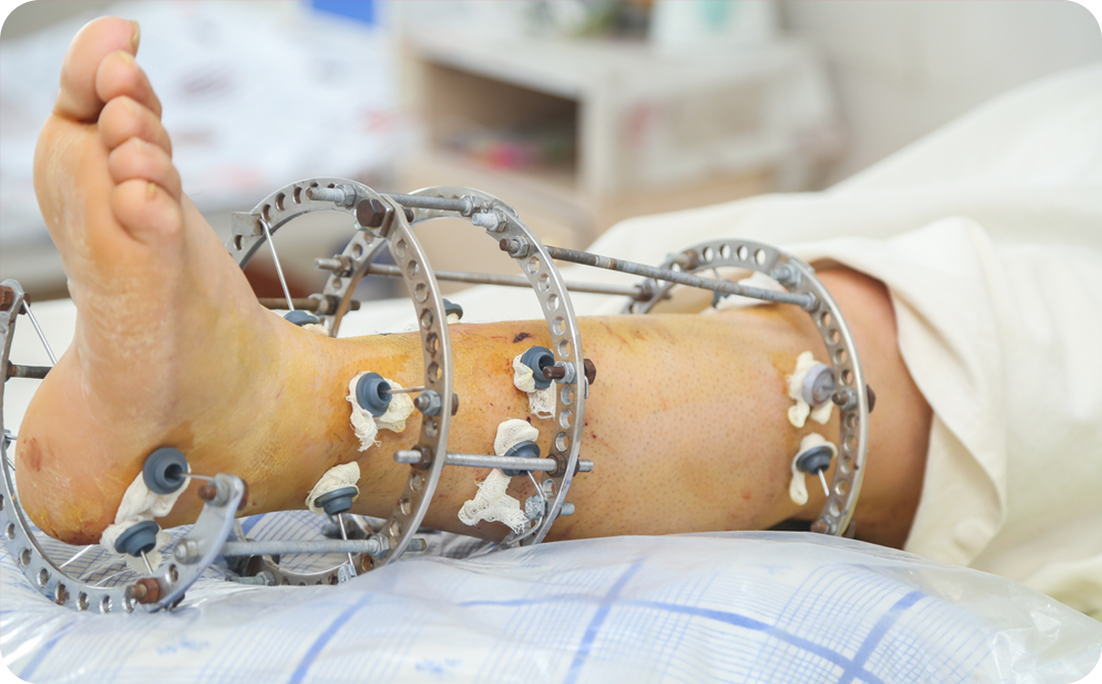What is Limb Reconstructive Surgery?
The specific surgical techniques used in limb reconstruction will depend on the patient's individual needs and the nature of their condition. Some patients may benefit from minimally invasive procedures, while others may require more complex surgeries.
This is a subspecialty of orthopedic surgery, which deals with the treatment of complications after injury and the correction of limb deformity including limb lengthening.
A large proportion of these patients will be diagnosed with osteomyelitis (infected bone) and require complex treatment.
Ultimately, limb reconstructive surgery aims to help patients regain as much function and independence as possible, improving their overall quality of life.
The Procedure of Limb Reconstructive Surgery
Limb reconstructive surgery typically begins with careful preoperative planning, where surgeons use imaging techniques like X-rays and MRI scans to assess the extent of damage and plan the correction.
During the surgery, under general anesthesia, the surgeon makes strategic cuts in the bone, known as osteotomies, to correct deformities or length discrepancies. The Ilizarov fixator, a circular frame with wires and pins that hold the bone pieces together, is then attached externally.
Gradually, the fixator is adjusted to encourage bone growth and alignment in the correct position, a process known as distraction osteogenesis.
Post-operative care is critical and often involves regular monitoring, adjustments to the fixator, and physical therapy to ensure a successful recovery and the best possible functional outcome for the patient.
This kind of surgery usually needs a Plastic surgeon and Orthopedic surgeon to work together to give the best results. These days a new field of Ortho-Plastic surgery in which an orthopedic surgeon is trained in Plastic Surgery and can perform individually the complete Limb Reconstruction surgery.
What is an external fixator, and different techniques ?
An external fixator is a metal frame that is built and secured as an external framework using wires and pins. It resembles a scaffold for a structure that is currently under construction. There are various types of external fixators, including the Ilizarov Ring Fixator and Orthofix.
1. Ilizarov Ring Fixator - The Ilizarov system corrects deformities with a series of rings connected by telescoping rods, employing procedures such as docking and distraction osteogenesis to correct and extend the bone. It is also beneficial in damaged extremities and may be applied across joints.
2. Orthofix - The Orthofix is a modular system that allows surgeons to rectify surgical deformities at a single or numerous levels.
Frequently Asked Questions About Limb Reconstructive Surgery
Recovery time varies greatly depending on the specific procedure performed, the patient's overall health, and the success of post-operative rehabilitation. Generally, patients may expect to spend a few days in the hospital followed by several weeks to months of recovery at home, with a gradual reintroduction of activity under the supervision of a physical therapist.
Yes, depending on the nature of the limb damage, non-surgical treatment options may include physical therapy, the use of orthotic devices, medication for pain management, and injection therapies. However, these options may not always provide the same level of functional restoration as surgical intervention.
Candidates for limb reconstructive surgery are typically individuals who have suffered significant trauma to a limb, have a disease affecting their limbs, or were born with a limb defect. The decision to undergo surgery will depend on factors like the patient's overall health, the severity of the limb damage, and the potential benefits of the procedure.
Insurance coverage for limb reconstructive surgery varies widely depending on the insurance company and specific policy. If the surgery is deemed medically necessary, it's more likely to be covered. It's recommended to check with your insurance provider for detailed information.
As with any surgery, limb reconstructive surgery carries risks such as infection, bleeding, blood clots, and reactions to anesthesia. Specific to this type of surgery, there may also be risks of non-healing fractures, nerve damage, limited range of motion, or the need for further surgeries.
Case Study By

Dr Nishant Soni
(MBBS, MS-Ortho)
Experience
Hand & Reconstructive
Micro Surgeon with 13 yrs
as specialist
Work in Stats till 2023
5000+ Carpal Tunnel Surgery
10010+ Hand Fractures
3000+ Wrist Surgeries
40000+ Happy Patients
Associations
Medanta MedCity
SCI International Hospital
Medanta MedCity
SCI International Hospital
Read More


